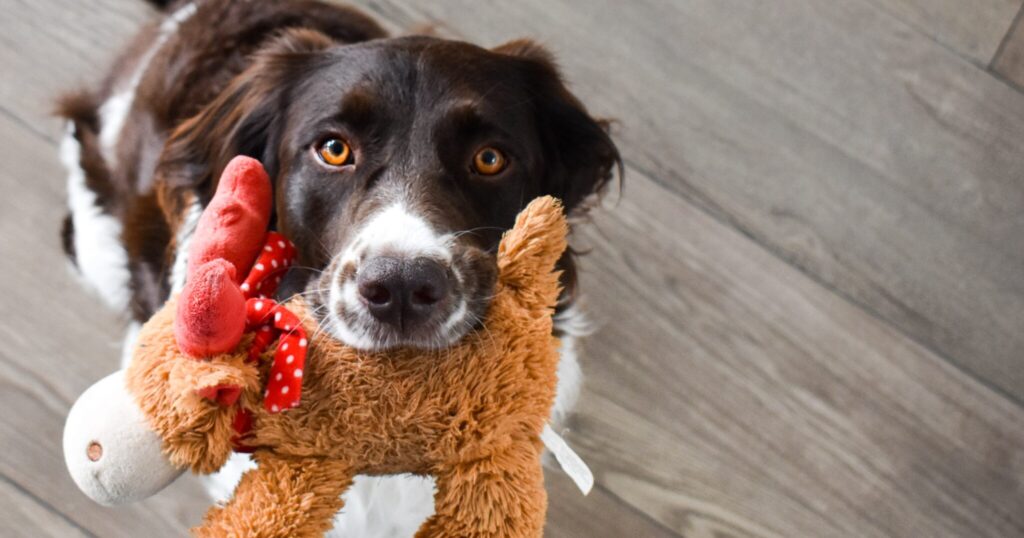"Pet toys are not strictly regulated in Australia. They can be made from anything the manufacturer wishes to include," explains Dr Nicole Rous, a Melbourne veterinarian and owner of natural pet brand Shy Tiger.
"The recalls that Product Safety Australia announces are more specific to human danger rather than pets," Dr Rous says.
We must be careful about what materials are in the pet toys we buy because pets chew on them. This means they can end up ingesting materials that leak from their toys or inhale chemicals that leach out.
"Much of our knowledge for pets is extrapolated from human studies, so we don't always have exact figures for toxic threshold levels of chemicals," says Dr Rous.
Thankfully, vets like Dr Rous can help educate pet owners on the chemicals they need to avoid when considering pet toys.
These are the top pet toy toxins she educates pet owners about:
- PVC: Polyvinyl chloride is plastic and often has toxic chemical additives to make it softer such as phthalates.
- Phthalates: A chemical that can leach out of toys over time and affect organs, including the liver and kidneys (Wooten & Smith, 2013).
- BPA: BPA is Bisphenol A, a hormone-disrupting chemical. Many products are advertised as 'BPA-free,' making it easier to avoid.
- Lead: Lead is a heavy metal found in many products. At high levels, it can damage multiple organs. The scary thing is that the clinical signs of lead toxicity are common signs that vets see in pets daily. They include lack of appetite, diarrhoea, constipation, anxiety, and muscle spasms. Lead is reasonably high in tennis balls that many dogs like to chew.
- Melamine: High levels of melamine ingestion have been linked to kidney failure. Melamine can be used in binding toys and as a fire retardant to stop toys from catching on fire. Some paints and varnishes also contain it.
- Arsenic: Arsenic is commonly found when toys have been tested, especially squishy toys. Denmark banned squishy toys containing foam, the ones that look like stress balls, and one of the chemicals was arsenic. Higher ingestion doses can result in vomiting and possibly even death.
- Bromine: Alternative to chlorine, also commonly used as a fire retardant. High levels can cause digestive and urinary issues.
- Formaldehyde: High levels can cause respiratory and digestive upset. Formaldehyde is a naturally occurring compound but can be made synthetically. It can be found in wood and other building materials.
